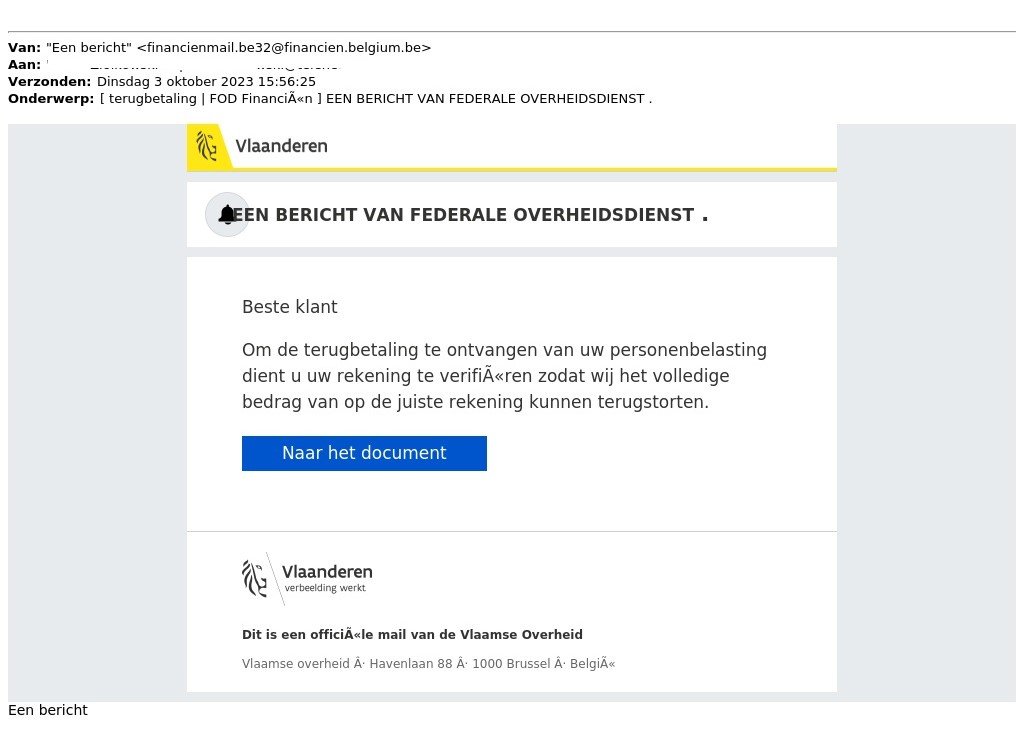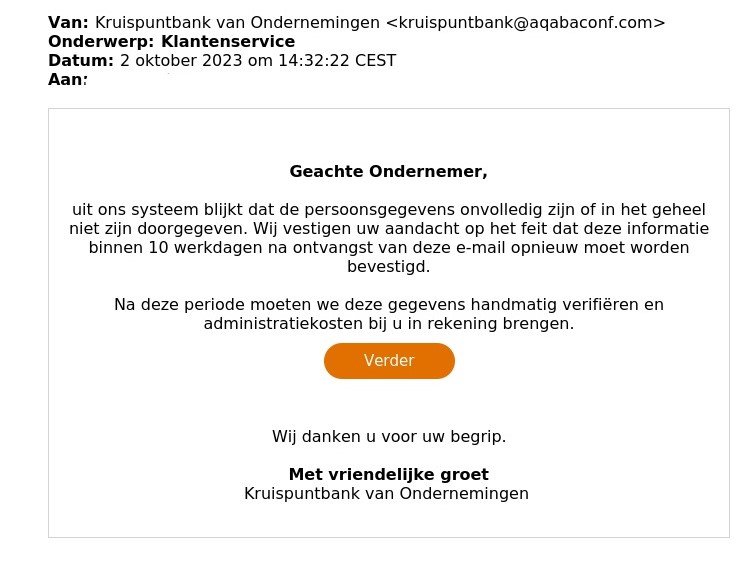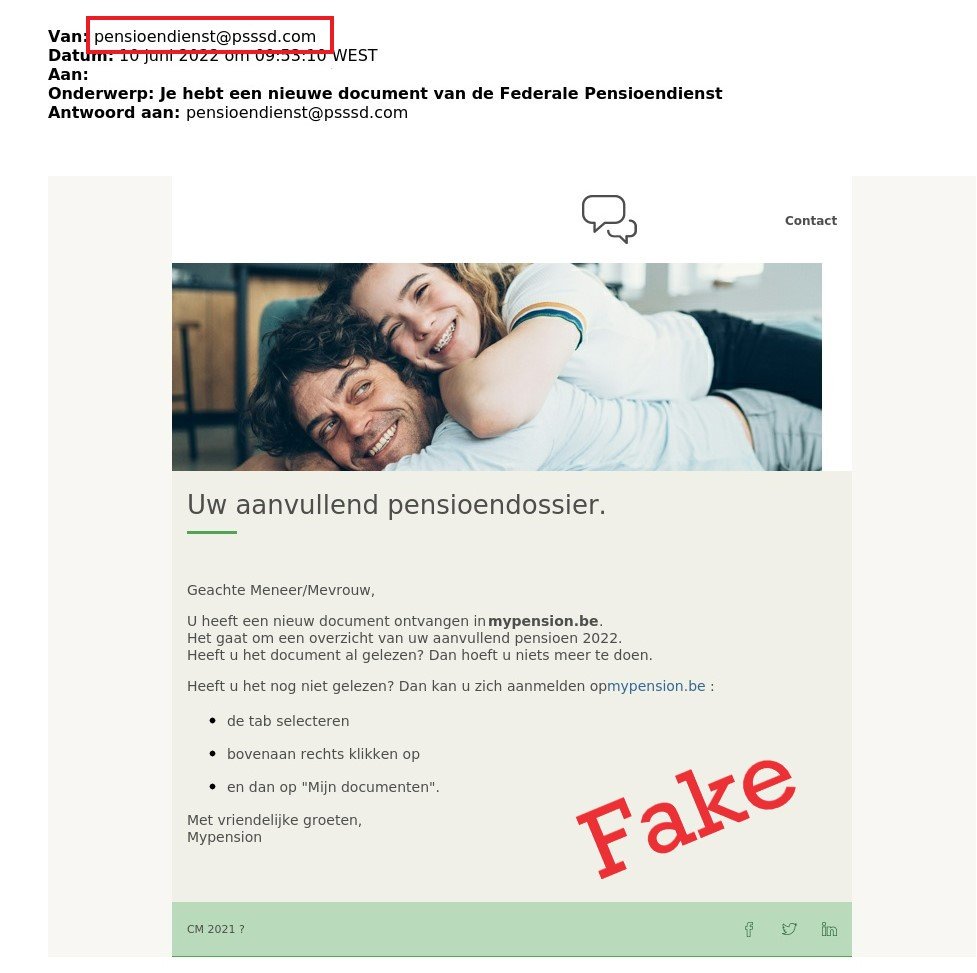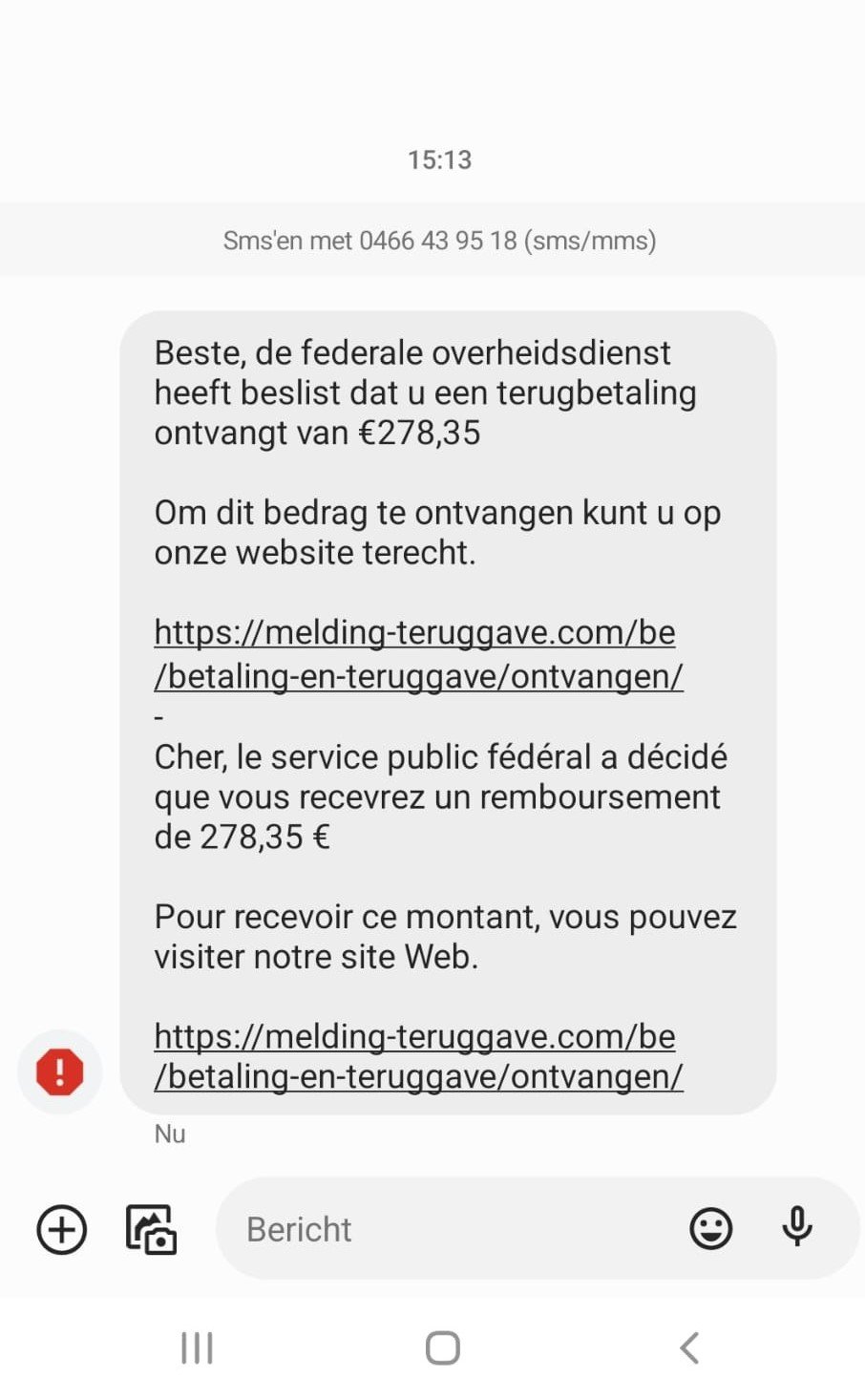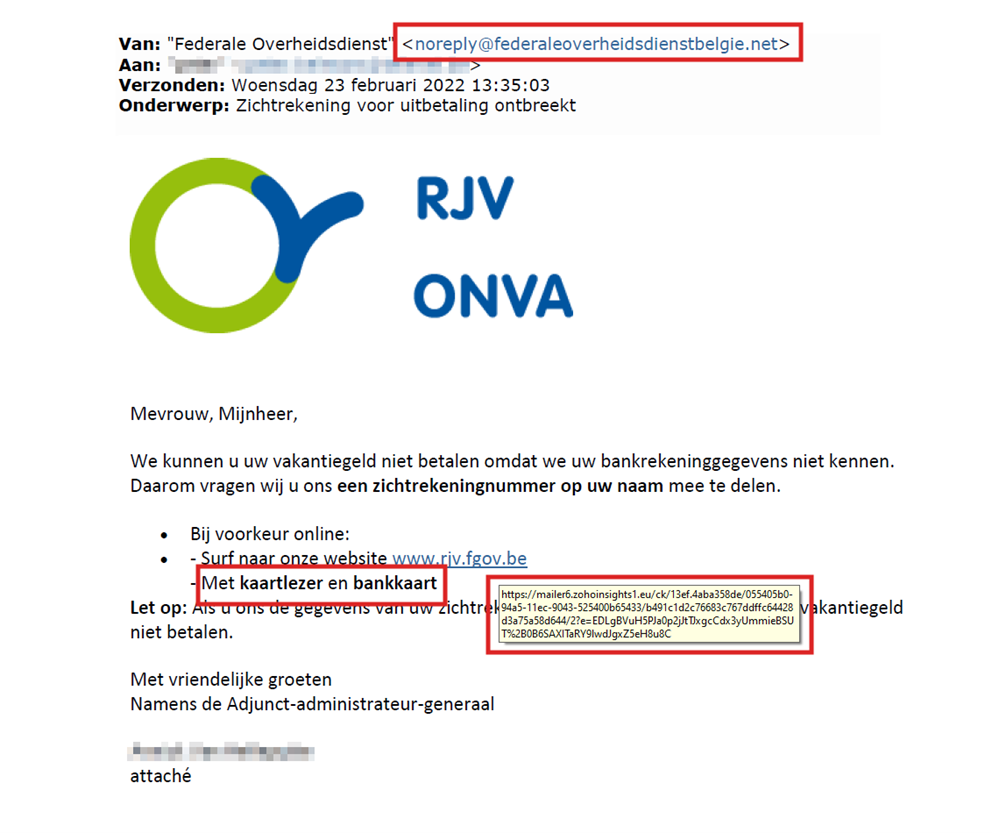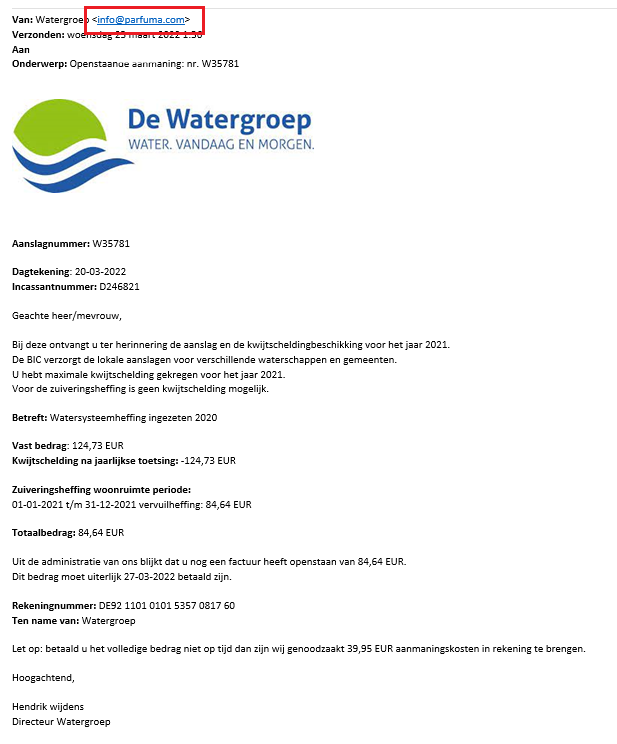I am Jean, 71, and I live in Brussels. I almost fell victim to phishing recently. I received an e-mail from the tax authorities, saying that I was entitled to a refund. The e-mail looked very official, with the logo of the tax authorities and everything. I clicked on the link in the e-mail, which took me to a website that looked very real.On the website, I had to fill in my personal details, such as my name, address, bank account number and bank code. I did this, but when I got to the end of the form, I started having doubts. Surely, the website looked slightly different from the real website of the tax authorities. And why did I have to enter my bank code? Surely they already have that information?
I decided to read the e-mail again carefully. Then I saw that a few things were wrong. The e-mail had not been sent from the official e-mail address of the federal government. And the link in the e-mail did not lead to the FPS Finance's real website.
I was relieved to realise it in time. I immediately forwarded the message to verdacht@safeonweb.be and then deleted it.
With my story, I want to warn other people about phishing. Always be careful with e-mails from unknown senders. And never click on links in emails unless you are sure they come from a reliable source.
This testimonial is a fabrication by an AI text generator, but is a great representation of a story we hear regularly at Safeonweb.
